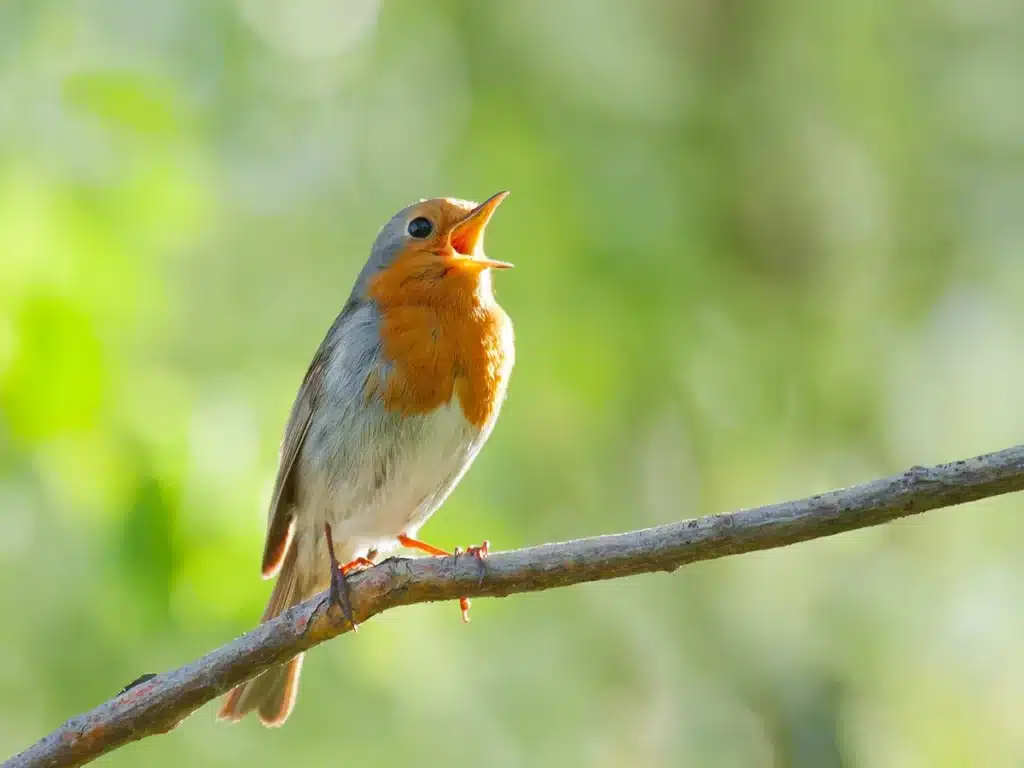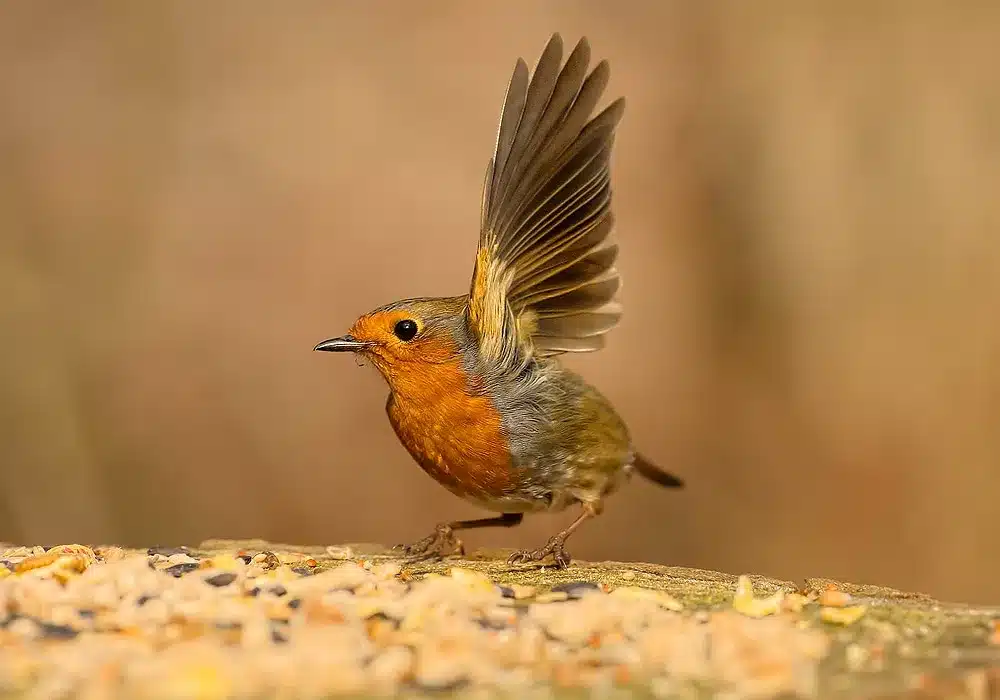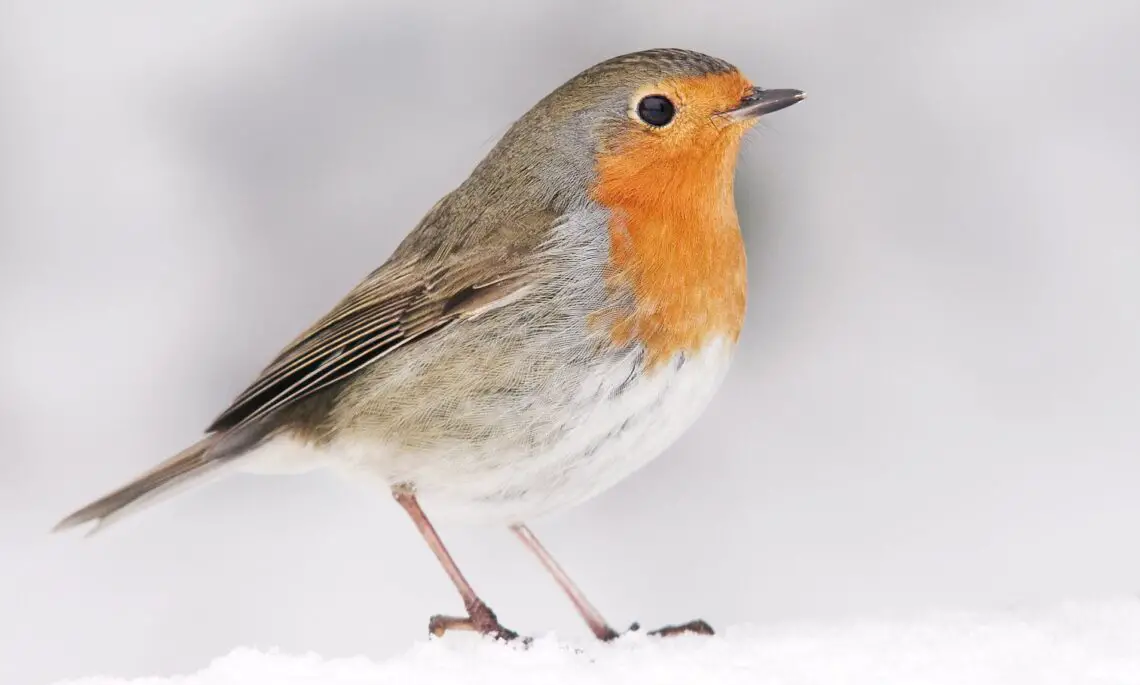Introduction
What Does A Robin Look Like: The American robin, celebrated as a harbinger of spring and a symbol of renewal, is an enchanting bird with a visual allure that captures the imagination of birdwatchers and nature enthusiasts alike. Its appearance is an artful blend of colors, patterns, and distinct features that define the essence of this iconic North American species.
The American robin’s visual charm lies in its distinctive characteristics that set it apart from other bird species. With its vibrant orange-red breast, it stands as a testament to the beauty of nature’s design. The captivating features that define the American robin, including its size, plumage, markings, and how it changes with the seasons. Whether observed in urban gardens, rural landscapes, or wooded areas, the American robin’s unique appearance makes it a captivating subject for bird enthusiasts and a cherished symbol of the changing seasons across North America.
We uncover the remarkable details that contribute to its iconic presence in our natural world, reminding us of the exquisite artistry of nature. Discovery to fully appreciate the captivating aesthetics of the American robin. The intricate details of what a robin looks like, from its vibrant plumage to its graceful form, painting a vivid picture of one of the most beloved birds in our natural world.

What do robin eggs look like?
American robins’ eggs are blue due to a pigment called biliverdin, which is deposited on the eggshell when the eggs are laid. Biliverdin is a green bile pigment and is the same pigment that causes some bruises to initially look bluey-green.
The journey of an American robin begins with the enchanting creation of its eggs, which hold the promise of new life and the continuation of a cherished species. Robin eggs are a marvel of nature, displaying distinctive characteristics that set them apart in the avian world.
Color Palette
Robin eggs are renowned for their striking blue-green color, often described as “robin’s egg blue.” This iconic hue is instantly recognizable and is a captivating representation of the natural world’s beauty. The delicate shade is achieved through a combination of pigments and calcium carbonate deposited in the eggshell during formation.
Size and Shape
American robin eggs are relatively small and oval-shaped, measuring about 1.1 to 1.3 inches (2.8 to 3.3 centimeters) in length. Their size makes them a perfect fit for the robin’s nest, providing cozy accommodations for the developing embryos.
Speckled Beauty
Robin eggs are adorned with small, speckled markings that add a touch of uniqueness to each egg. These speckles can vary in color, appearing as tiny dots or fine lines, and serve as a form of camouflage to help protect the eggs from predators.
Symbol of Hope
Beyond their physical attributes, robin eggs symbolize the promise of new beginnings and the continuation of life. The nests that cradle these precious eggs are a testament to the dedication and nurturing instincts of adult robins, reminding us of the wonders of parenthood in the natural world.
How big is a robin?
Characteristics. The American robin is 8-11 inches in length and has a wingspan of 12-16 inches. The male American robin has dark gray or brown back and wing feathers and reddish-orange chest feathers. The females have the same color pattern, but she is a little duller in color.
The American robin (Turdus migratorius) is a bird that commands attention with its graceful and moderate size. It is a familiar sight across North America, and its size places it among the medium-sized birds of the region.
Length
An adult American robin typically measures between 9 to 11 inches (23 to 28 centimeters) from beak to tail. This measurement encompasses the bird’s slender body, tail, and beak.
Wingspan
The wingspan of an American robin ranges from 12 to 16 inches (30 to 41 centimeters). This wingspan enables the robin to take to the skies with ease and grace.
Weight
These birds are relatively lightweight, with adult robins weighing in at approximately 2.7 to 3 ounces (77 to 85 grams). This weight is well-suited for their aerial maneuvers and agile foraging.
What do pigs symbolize?
It is a sprightly black bird with white patch on the wing and rusty red under root of its cocked tail. Its hen is ashy brown without the wing-patch. It can be seen in pairs in dry open lightly wooded country. It feeds on insects and their eggs, spiders etc.
In some cultures, pigs are symbols of wealth, abundance, and prosperity. The Chinese New Year often features the “Year of the Pig,” symbolizing good fortune, happiness, and wealth. This association is rooted in the pig’s ability to reproduce quickly and provide a bountiful source of food.
On the flip side, pigs have been used as symbols of gluttony and excess. Phrases like “eating like a pig” or “living in a pigsty” connote indulgence and untidiness. This symbolic use highlights the negative aspects of overconsumption and lack of self-control.
In modern pop culture, pigs often appear as lovable and relatable characters. From Piglet in A.A. Milne’s “Winnie-the-Pooh” to the Muppets’ Miss Piggy, these characters embody traits such as innocence, vulnerability, and humor. They serve as a reminder of our shared human experiences.
In recent times, pigs have taken on new symbolism related to environmental issues. The industrial farming of pigs has raised concerns about animal welfare, environmental degradation, and health risks. Pigs have become symbols of the complex relationship between humans, animals, and the environment, prompting discussions about sustainable agriculture and ethical treatment of animals.
What is special about a robin?
For centuries, this tiny bird has been the symbol of good luck, happiness, rebirth – and sometimes even as a messenger for lost, loved ones. There are tales stretching back to Norse mythology where the robin is the protector from storms and lightning. And in Celtic folklore the robin is known as the Oak King of Summer.
The American robin, scientifically known as Turdus migratorius, holds a special place in the hearts of many as a symbol of hope, renewal, and the changing seasons. There are several remarkable aspects that make this bird truly special:
Seasonal Harbinger
One of the most iconic features of the American robin is its role as a herald of spring. As the days grow longer and winter yields to warmer weather, the sight and sound of robins returning from their winter migrations mark the arrival of this beloved season. Their presence brings a sense of optimism and renewal after the cold months.
Distinctive Appearance
Robins are easily recognizable by their vibrant orange-red breast, a feature that inspired the name “robin’s egg blue” for their eggs. Their medium size, elegant form, and white eye ring further contribute to their unique visual identity.
Melodious Song
The American robin is known for its melodious and cheerful song. Its cheerful warbling adds a delightful soundtrack to spring mornings and is a reminder of the beauty of nature.
Nesting and Parenting
Robins are dedicated parents, meticulously building nests and caring for their young. Observing their parenting behaviors, from nest construction to feeding their chicks, is a testament to the wonders of the avian world.
Versatile Adaptation
Robins are adaptable birds, thriving in a range of environments from urban settings to woodlands. Their diet includes insects, fruits, and berries, allowing them to adapt to seasonal food availability.
What does a little robin look like?
Baby birds often don’t resemble their parents, and baby robins are a classic example. They have dark-spotted breasts during their first summer, rather than reddish orange ones, and buff speckling along their backs and breasts.
Pigs have held a unique and multifaceted symbolism in human culture for centuries. These intelligent and adaptable creatures have been featured in folklore, religion, literature, and various cultural contexts. The diverse meanings and representations associated with pigs, from their roles in ancient mythology to their significance in modern society.
Pigs have played significant roles in the mythology and religious beliefs of various cultures. In ancient Egypt, the pig was associated with the goddess Isis and symbolized fertility. In Hinduism, the boar incarnation of Lord Vishnu, Varaha, represents divine protection and preservation. Conversely, in Judaism and Islam, pigs are considered unclean animals and are forbidden to be consumed, reflecting the idea of purity and taboo.
Pigs have been featured prominently in literature, often serving as symbols of various themes and ideas. George Orwell’s “Animal Farm” is a classic example where pigs represent the corrupting influence of power and the rise of totalitarianism. In William Golding’s “Lord of the Flies,” a pig’s head on a stick becomes a symbol of the boys’ descent into savagery. Additionally, the character of Wilbur in E.B. White’s “Charlotte’s Web” portrays the innocence and vulnerability often associated with pigs.
Is a robin a small bird?
Robins are medium-sized birds with large bellies, long legs and medium-length tails. Adults have dark gray or black heads, gray backs and wings, and bright reddish-brown undersides with a white patch under the tail.
Size Comparison
Robins are considered small birds, measuring about 5.5 to 6.3 inches (14 to 16 centimeters) in length. They typically weigh around 1.2 to 1.8 ounces (34 to 52 grams). In comparison to larger avian species like eagles or ostriches, robins are undeniably small.
Physical Characteristics
Apart from their size, robins have other distinguishing features. Their vibrant orange-red breast is one of their most recognizable traits, contrasting with their brownish-gray upperparts. This coloration aids in identifying them.
Behavioral Characteristics
Robins are known for their territorial behavior and sweet, melodious songs, which they use to establish dominance and attract mates. They are also migratory birds, with some populations covering significant distances during seasonal migrations.
Ecological Role
Despite their small size, robins play a vital role in their ecosystems. They help control insect populations and disperse seeds by consuming various fruits. Additionally, their nests provide shelter for other small creatures during the winter months.
What is a true robin?
The name Robin is applied to a number of familiar birds, but in North America it is the migratory thrush. (Turdus migratorius.) Our Robin, a true thrush, is a migratory bird with a reddish brown or tawny breast and a loud cheery song.
Physical Characteristics
True robins are known for their distinct appearance. They have a round, plump body with a vibrant orange-red breast, contrasting with brownish-gray upperparts. These birds are relatively small, measuring 12 to 14 centimeters (4.7 to 5.5 inches) in length and weighing about 16 to 22 grams.
Behavior and Habitat
European Robins are territorial birds known for their sweet, melodious songs used to establish dominance and attract mates. They are adaptable and can be found in various habitats, including woodlands, gardens, and urban areas.
Diet
True robins primarily feed on insects, worms, and small fruits. Their diet varies with the seasons, with a greater focus on insects during the breeding season and a shift toward fruits during the colder months.
Cultural Significance
In European folklore and culture, the European Robin holds special significance. It is often associated with Christmas and is sometimes referred to as the “robin redbreast.” This bird has been featured in various myths and legends, making it an iconic and beloved symbol in the region.
Do Robins see color?
Thanks to special molecules in their retinas, birds like the European robins can literally see magnetic fields. The fields appear as patterns of light and shade, or even color, superimposed onto what they normally see.
Color Vision in Robins
Yes, robins do possess color vision. Like many birds, robins have a well-developed ability to see a range of colors. Their vision extends into the ultraviolet (UV) spectrum, which means they can perceive colors that are invisible to humans. This UV vision is particularly useful for foraging, as many fruits and insects have UV-reflective properties that aid in detection.
Importance of Color Vision
The ability to see color is essential for robins in various aspects of their lives. For instance, they use their color vision to identify ripe fruits, which are often brightly colored. In addition, their colorful plumage plays a role in mate selection and communication, allowing them to convey information about their health and vitality to potential mates.
Behavioral Significance
Color vision also helps robins recognize other birds and objects in their environment more effectively. This enhances their ability to navigate, forage, and interact with their surroundings.

Conclusion
The American robin is a captivating bird with a distinctive and enchanting appearance. Its vibrant orange-red breast, white eye ring, and intricate plumage set it apart as a symbol of beauty and renewal. The robin’s medium-sized frame, elegant form, and charming markings make it a cherished subject for birdwatchers and nature enthusiasts. As it graces our gardens, parks, and woodlands, the American robin reminds us of the timeless artistry of nature and the ever-changing seasons. This bird’s visual identity is a testament to the intricate design found in the natural world, inviting us to appreciate and admire the wonders that surround us every day. Whether in flight or perched on a branch, the American robin continues to inspire awe and admiration, leaving an indelible mark on the canvas of our natural world.
The American robin, with its distinctive appearance and iconic red breast, is a bird that symbolizes both the beauty of nature and the changing of seasons. Its striking plumage, graceful size, and charming markings have made it a beloved subject for birdwatchers and a symbol of hope and renewal. Whether observed in urban settings or natural habitats, the robin’s unique visual identity never fails to captivate the imagination and remind us of the exquisite artistry found in the natural world. We are left with a deep appreciation for the intricate details that define this iconic bird, inviting us to cherish and protect the wonders of the avian realm that surrounds us.
The American robin’s distinctive appearance, marked by its vibrant orange-red breast and intricate plumage, leaves an indelible impression on those who encounter it. Its graceful size, charming markings, and unique visual identity have made it a symbol of the changing seasons and a beloved species among bird enthusiasts. Whether perched on a branch or foraging for food in gardens and parks, the robin’s presence is a reminder of the beauty of the natural world and the intricate design found in every corner of our environment.





No Comments